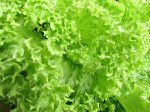Hollow fruit disorder in hydroponic greenhouse systems
Hollow fruit description
Hollow fruit, also called puffy fruit or boxy fruit are angular in shape instead of round, however one should be careful since some tomato fruit are genetically more hollow or angular than other. The first signs inside the fruit are the lack of “gel” surrounding the seed, leaving a gap between the placental tissue and the outer wall of the locule.
Cause
The disorder is often associated with low light conditions. However since Africa has enough light, the disorder might occur during long overcast periods as well. Old cladding material that has lost its ability to let light through can be a major cause of low percentage of marketable fruit. Selecting too dense shade netting in areas with short light periods (latitude and mountains in the areas) reduces the amount of photosynthetic active radiation (PAR) that the plant needs to develop normal fruit.
It has been found that the uses of growth regulators are more likely to cause hollow fruit, especially when temperatures are low.
Control
A good fertilizer program will reduce the chance of this disorder developing. To high levels of nitrogen will increase the risk. High potassium levels tend to reduce the occurrence of the disorder. It is essential to change your fertilizer program throughout the season. Play around with potassium levels especially when fruiting starts. As the stem gets longer, higher humidity reduces transpiration and reduces the rate at which nutrients reaches the top fruit. Manipulating the EC and humidity levels can increase the quality of the fruit at the end of the season.
Temperature and humidity control is essential. The ideal temperatures at which tomatoes grow are between 18°C at night and 28-30°C during the day. Very high humidity conditions will reduce transpiration rate and affect fruit quality.
At the end the easiest is to adapt the crop variety. Make sure to select varieties that are suited to your climate before changing capital structures such as cladding material, heating systems, pad and fans etc.



